Violet Jelly to Celebrate Spring
One of the first signs of spring is wild violets! Reveal in the season by making 4-ingredient Violet Jelly!
Spring is late again–which makes it even more welcome! Violets will soon stud the lawns and blossoms grace cherry trees, making for a lovely scene. But this means that local food will also be late… what is a locavore to do?
Eat violets? Yes!
A couple years ago I made a ginger violet salad which was pretty and tasty, but I wanted to do a little more this year. Full of canning inspiration, I decided to try violet jelly. I ended up with four little jars which sat, in pink-purple splendor, and were eyed suspiciously by my kids. 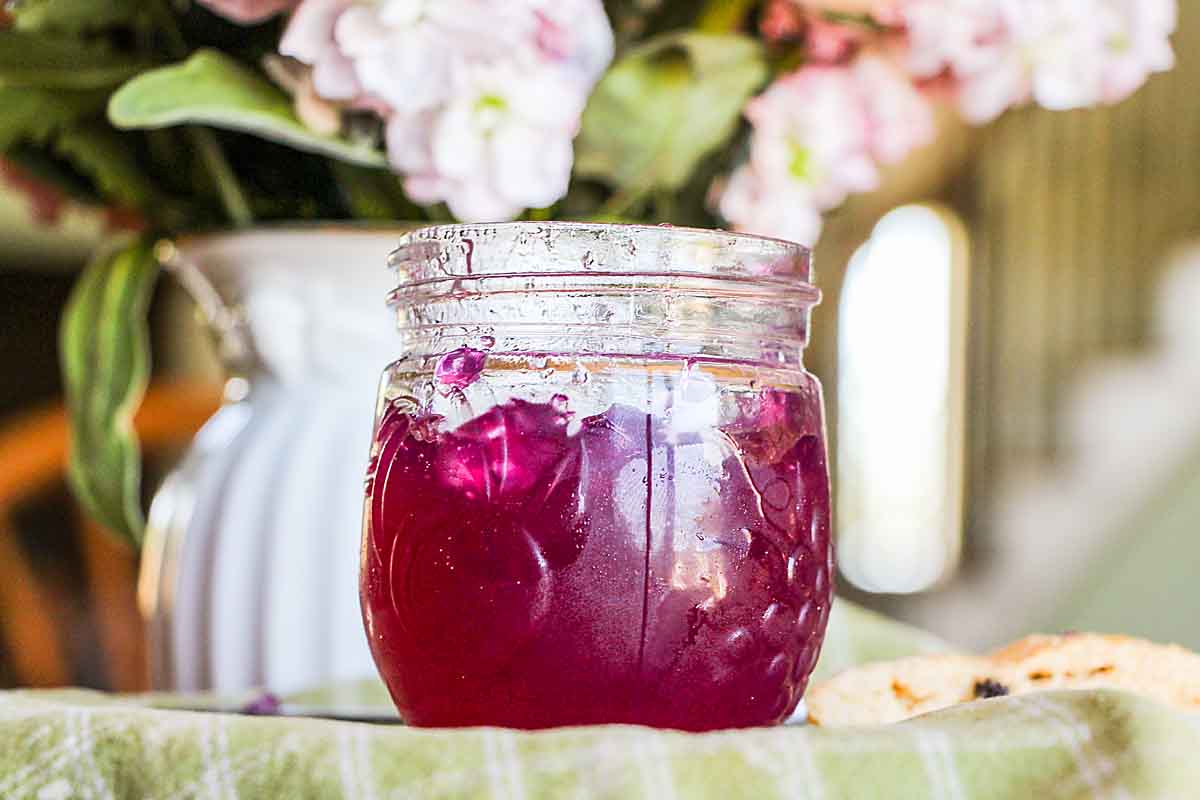
This weekend, with daughter #1 home from college, we are enjoying a family weekend. To celebrate–and to try out the jelly–she made scones. When they came out of the oven, everyone gathered around and it sounded like this:
“Hurry, I’m going out.” “It’s GOOD” (eyes wide). “You look surprised.” (laughing) “It’s so PINK.” “It IS good.” “It tastes like jello.” “It doesn’t taste like jello.” “Why are you eating strawberry jam?” “Save some for the pictures.” (Snort) “You don’t need to do that.” 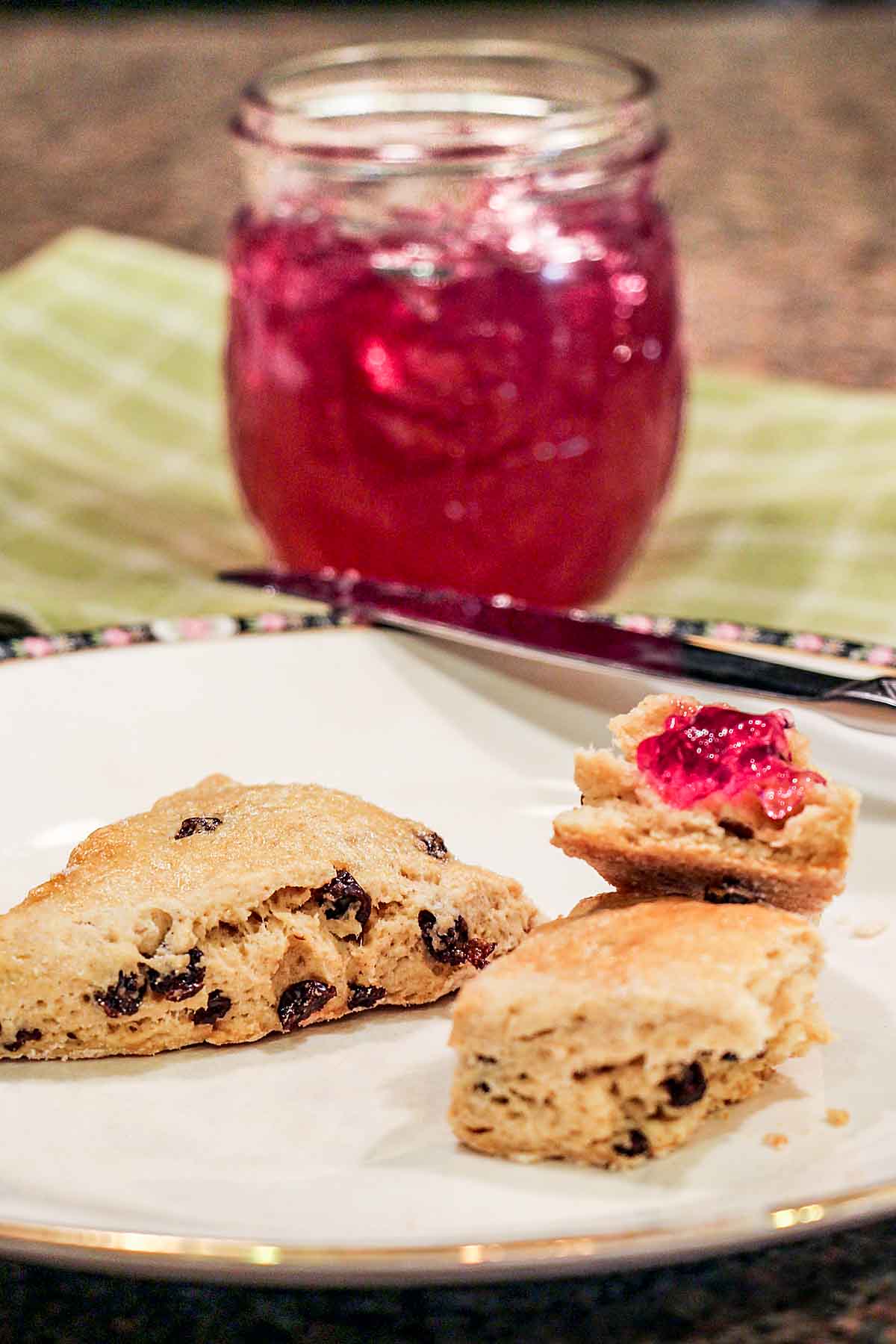
The jelly tasted good even to a non-jelly-eater like me. I would describe the flavor as lemony with an herbal-floral undertone. Putting it on the scones meant they didn’t even need butter! Though daughter #1 (who studied for a year in Britain) suggested I might research homemade clotted cream. Violet jelly with scones and clotted cream? Hmmmm…
What You’ll Need
Ingredients:
- Wild violet flowers (with stems removed). You’ll want to get these from an area which has not been sprayed with chemicals and is free from pet waste. Note that African violets (houseplants) are poisonous and should NOT be used.
- Water
- Lemon juice. This adds flavor and acidifies the jelly to reduce spoilage
- Sure Jell Pectin for low sugar jam. Different types of pectin may have different steps, so I suggest you use this one unless you are already proficient in jelly making and are comfortable making the adjustments.
- White granulated sugar. You can use organic raw sugar but it might muddy the color.
Equipment:
- Cheesecloth for straining
- Canning equipment (canner, jar grabber, etc–see Food in Jars for equipment rundown) for canning. Alternatively, you can refrigerate the jelly instead of canning it. In that case, you might consider cutting the recipe in half.
Step by Step Directions
Recipe based on one from Healthy Green Kitchen, Yield: About 2 cups (four 1/2 cup jars)
1. Rinse and drain flowers, and place in a heat-proof container. Bring water to a boil and pour over petals. Cover and allow to steep overnight, or for up to 24 hours. 
2. Strain the liquid through cheesecloth. Press the liquid from the plant material (compost or discard the flowers when you’re through). Add water to bring up to 2 cups of liquid if needed. If not using it right away, you can refrigerate it for up to 24 hours.
3. Combine strained liquid with lemon juice in a saucepan, then whisk in the pectin and the sugar. Bring to a full rolling boil, whisking to ensure the sugar and pectin dissolve. Turn the heat down and simmer, stirring occasionally, for about 5 minutes or until the jelly has reduced a bit and thickened. You can place a little jelly on a saucer and pop into the freezer for a minute to test.
4. Skim off any foam and then ladle into clean, hot and sterile jars, leaving 1/8″ head space. Wipe jar edges, top with lid and screw on the rings. Process in a hot-water bath for 10 minutes, then remove from heat and let sit in covered canner for an additional 5 minutes.
5. Remove jars and allow to cool for 24 hours on the counter. Refrigerate any jars that don’t seal. 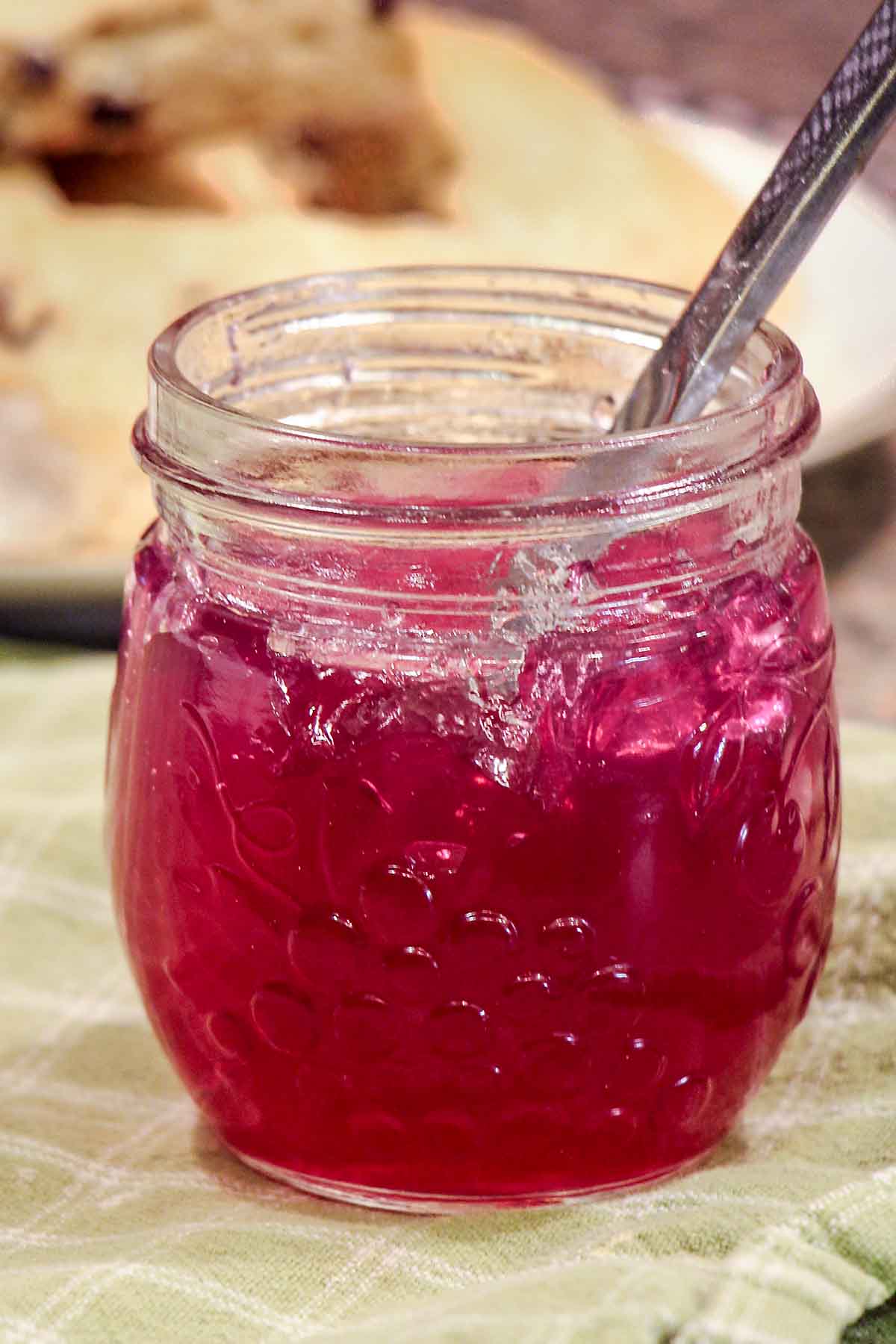
Tips and FAQs
From what I have read, the color of the juice can vary from green/yellow to pink/purple based on the acidity of your water but will generally be pink or purple after the addition of the lemon juice (mine was pink/purple the whole time).
A lot of recipes use more sugar but I agreed with the this version’s creator that less sweet was better and used her reduced amounts. I did use the reduced sugar pectin to compensate.
I used four cups of violets because we had so many, but many people have reported success with two. Violets are reputed to contain vitamin C and were a favorite treat of my Guinea Pigs (who even ate the stems).
If you’re not a canner the jelly can be stored in the refrigerator. In that case, consider cutting the batch size in half so it is easier to finish quickly.
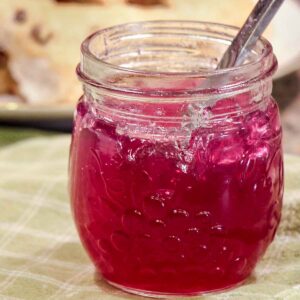
Violet Jelly
Ingredients
- 2 – 4 cups fresh wild violet flowers with stems removed from an area which has not been sprayed with chemicals and is free from pet waste. African violets (houseplants) are poisonous and should NOT be used.
- 2 cups water
- 1/4 cup lemon juice I used fresh squeezed organic
- 1 1.75 oz package pectin (I used Sure Jell for low sugar jam)
- 2 cups white granulated sugar
Instructions
- Rinse and drain flowers, and place in heat-proof container. Bring water to a boil and pour over petals. Cover and allow to steep overnight, or for up to 24 hours.
- Strain the liquid through cheesecloth. Press the liquid from the plant material (compost or discard the flowers when you’re through). Add water to bring up to 2 cups of liquid if needed. If not using it right away, you can refrigerate it for up to 24 hours.
- Combine strained liquid with lemon juice in aa medium saucepan, then whisk in the pectin and the sugar. Bring to a full rolling boil, whisking to ensure the sugar and pectin dissolve thoroughly, then turn heat down and simmer, stirring occasionally, for about 5 minutes (or until the jelly has reduced a bit and thickened).
- Skim off any foam and then ladle into clean, hot and sterile jars, leaving 1/8″ head space. Wipe jar edges, top with lid and screw on the rings, then process in a hot-water bath for 10 minutes, then remove from heat and let sit in covered canner for an additional 5 minutes.
- Remove jars and allow to cool for 24 hours on the counter. Check seals. Refrigerate any jars that don't seal and use within a couple weeks.
- After opening a jar, store leftovers in the refrigerator and use within a few weeks.

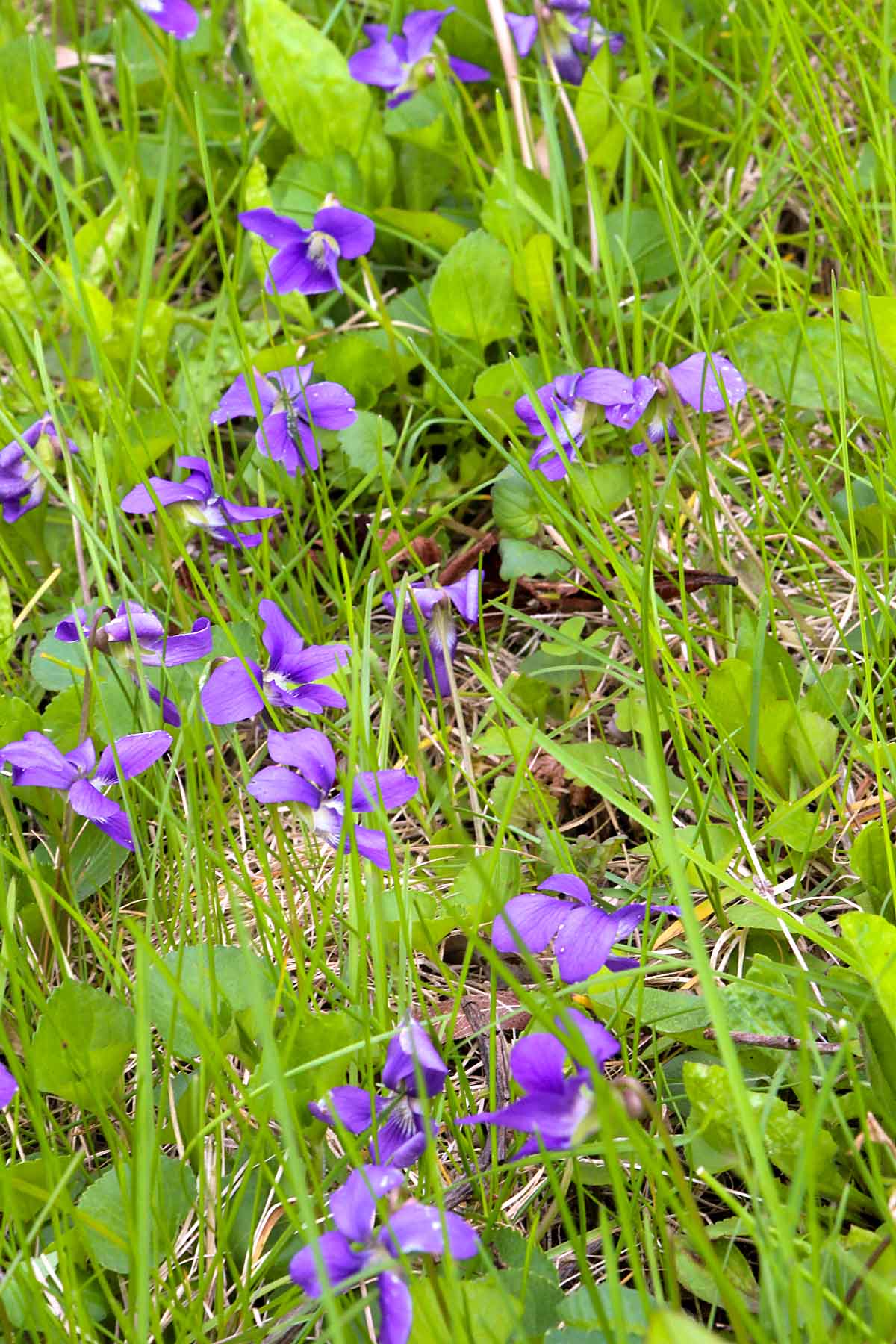
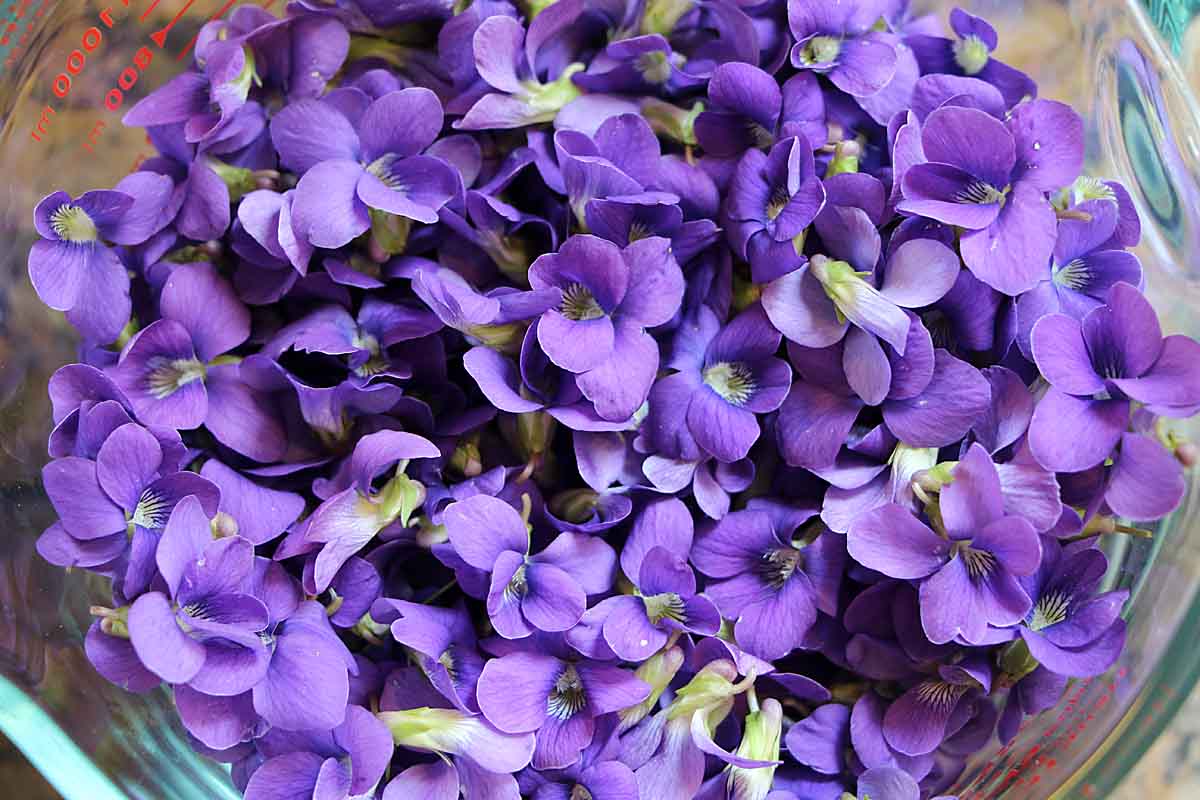
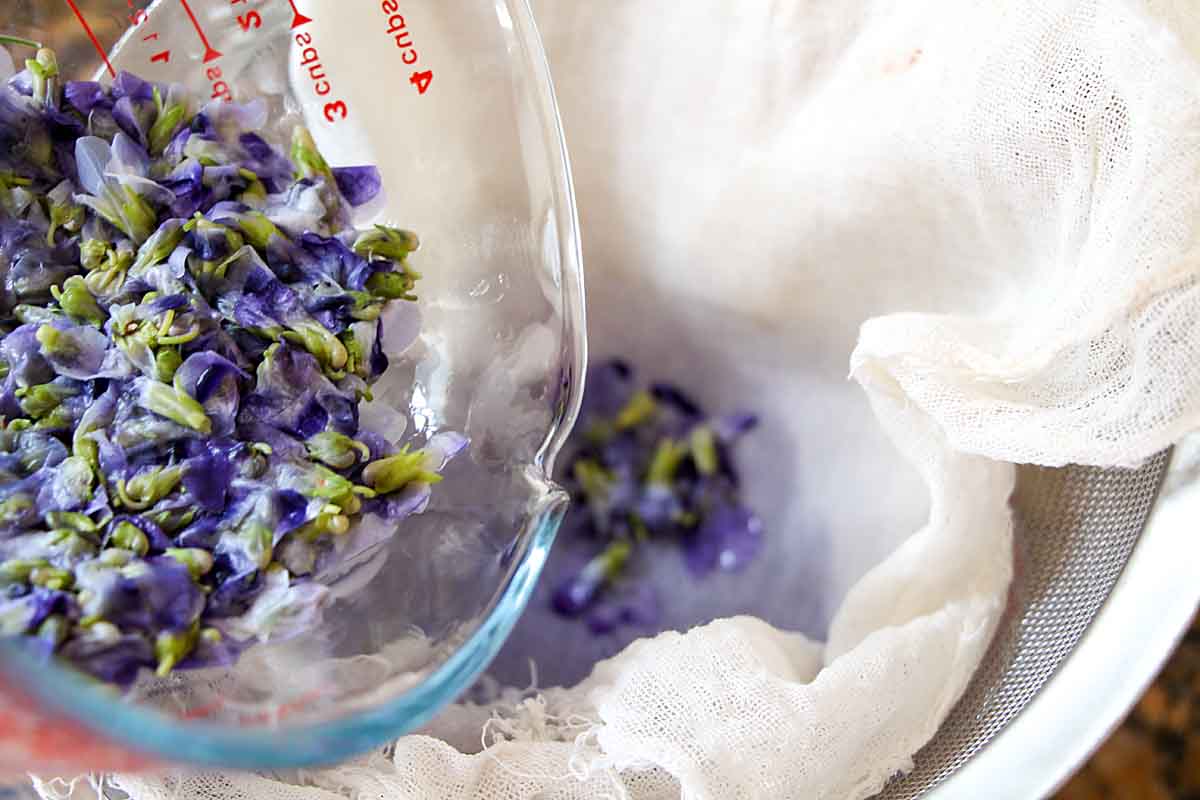
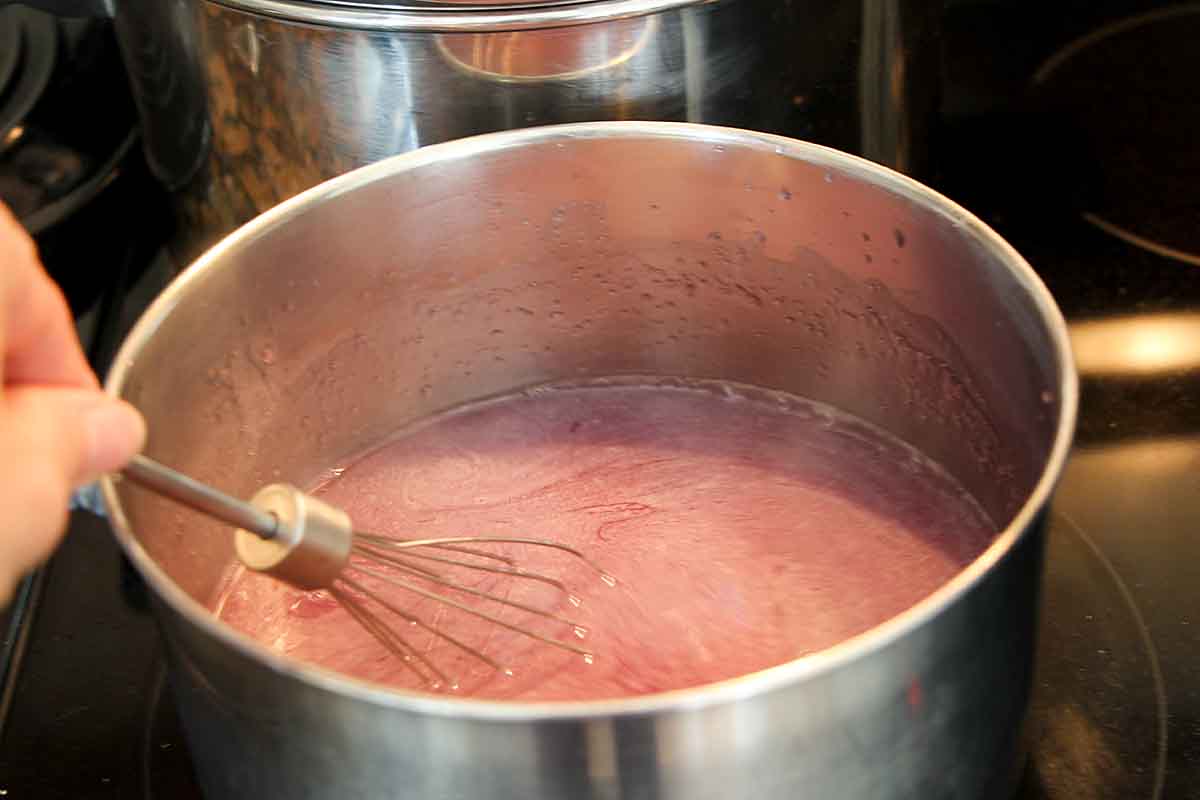
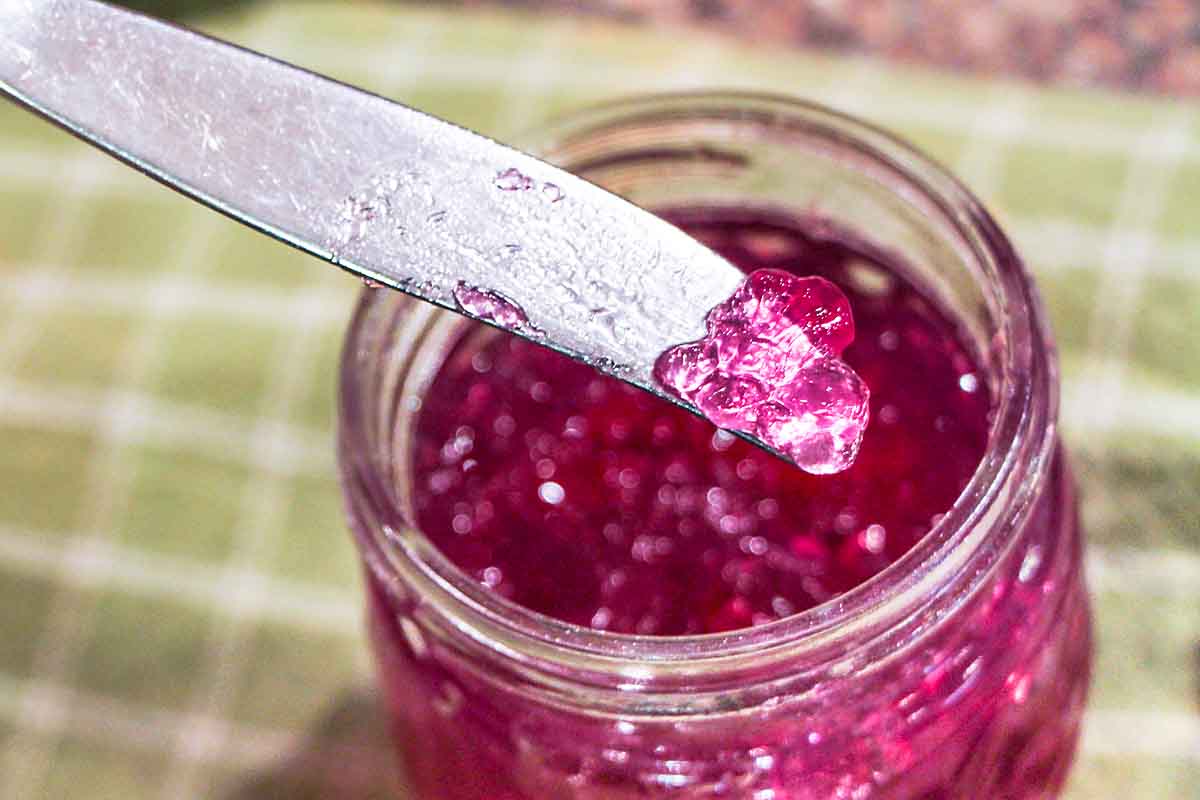

I have been wanting to make this jelly for some time now. This looks amazing!
The color on your jelly is simply gorgeous! I bet it is perfect on toast!
What a spectacular color this jelly is! I love using wild edibles and foraging, but I’ve never used violets (yet). Definitely love this idea!
What a beautiful color! I do have violets in the yard but I’m not sure what type they are.
Beautiful color! And you definitely need to try the clotted cream =)
This looks fantastic! My mouth is watering 🙂
I was hoping for one more batch, but they are gone for the season now…
How pretty!
Thanks!
Violet jelly/jam with scones and clotted cream, oh my. I’ve always wanted to try my hand at violet jelly and other edible flower recipes. Although, I did make marigold jelly once:) I wonder if Parma Violets could be used in this recipe? They are quite fragrant.
So nice to have your daughter experience your first violet jelly recipe at home. Priceless…
Thanks for sharing, Inger…
It’s so good to have you back Louise! Marigold jelly sounds lovely! I am happy to have my daughter back and glad that grad school will be closer!
What a neat idea! This looks so pretty! I’ll have to try to remember this for next year. Unfortunately we had a warm spell early this year (followed by another cold spell…shesh!) so all of our wild violets have already come and gone.
I knew I was posting this on the late side. But you know I think that’s the great thing about having a blogging history like we do–you know that it makes sense to queue interesting projects up for next year!
Using these in jelly is just gorgeous, I bet this tastes absolutely fantastic 🙂
And looks so springy!
Cheers
Choc Chip Uru
Thanks Uru!
Beautiful! These make a great cordial also.
Oooo, I’ll have to see how many we have left!
I love the color of the jelly! I also love the jello comment 🙂 On a related note, did you know that jelly in the UK means jello? They only use the word jam for what you’d spread on a scone. Shoot, now I really want a scone with jam and clotted cream!
I remember from studying in Ireland that “pudding” was dessert, not what we would call pudding too. But since you want clotted cream now as well, I guess I really will need to try making some!